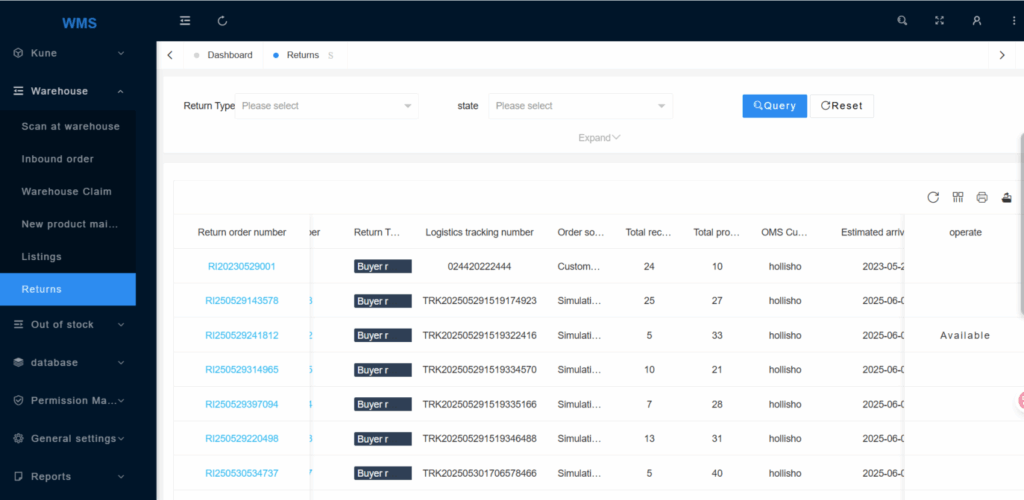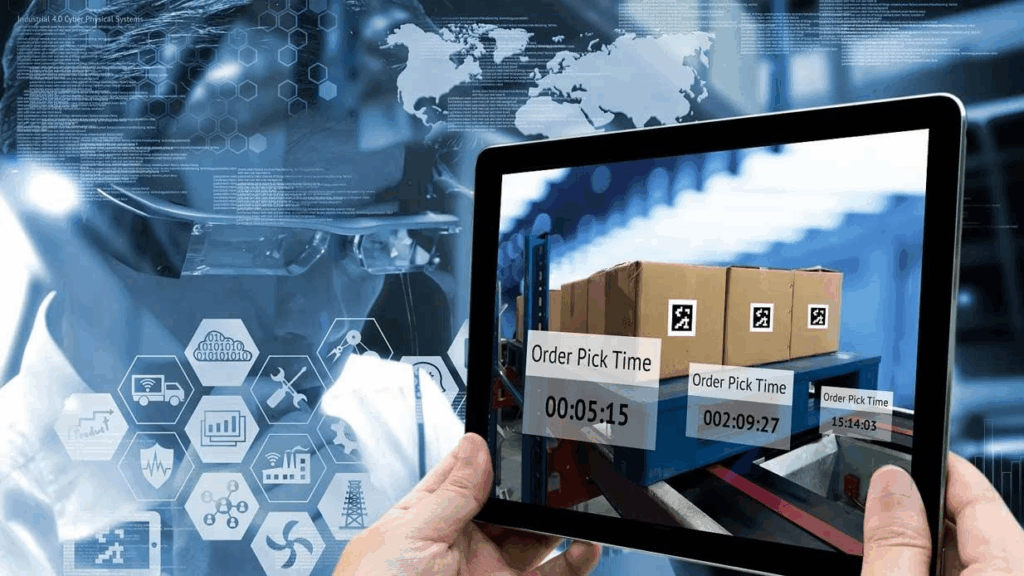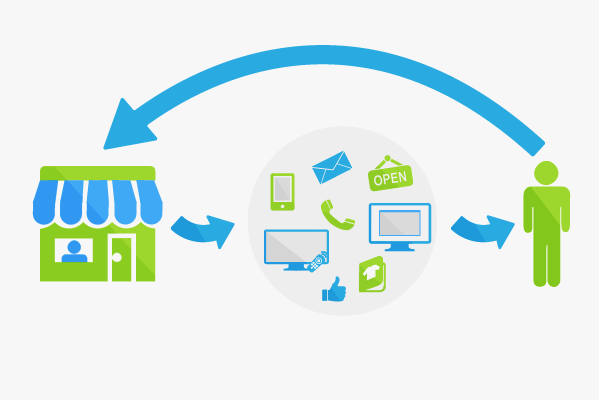Principaux avantages de la logistique inverse dans la gestion de la chaîne d'approvisionnement
La logistique inverse est un élément essentiel, mais souvent négligé, de la logistique moderne. gestion de la chaîne d'approvisionnement. Si la plupart des entreprises se concentrent sur la bonne livraison des produits aux clients, la gestion des retours et des stocks excédentaires est tout aussi importante. Comprendre les avantages de la logistique inverse peut aider les entreprises à économiser des coûts, à améliorer la satisfaction des clients et à contribuer aux efforts de développement durable. Dans cet article, nous examinerons les principaux avantages de la logistique inverse dans le cadre de la gestion de la chaîne d'approvisionnement.

Qu'est-ce que la logistique inverse ?
Logistique inverse La logistique inverse désigne le processus consistant à déplacer des produits ou des matériaux de leur destination finale vers le fabricant ou le fournisseur. Contrairement à la logistique traditionnelle, qui se concentre sur la livraison des marchandises aux clients, la logistique inverse s'occupe des retours, du recyclage, de la remise à neuf et de l'élimination des produits. Il s'agit d'un élément essentiel de la gestion de l'ensemble du cycle de vie des produits.
Principaux avantages de la logistique inverse dans la gestion de la chaîne d'approvisionnement
1. Réduction des coûts et amélioration de l'efficacité
L'une des principales raisons pour lesquelles les entreprises investissent dans la logistique des retours est la réduction des coûts opérationnels et l'amélioration de l'efficacité. En optimisant les processus de retour, les entreprises peuvent :
- Réduire les coûts de transport en optimisant les itinéraires de retour et l'emballage.
- Minimiser les frais d'entreposage en améliorant la gestion des stocks.
- Réduction des coûts de réparation et d'élimination par une remise en état ou un recyclage efficace.
En gérant efficacement le processus de logistique inverse, les entreprises peuvent gagner du temps et de l'argent tout en améliorant l'efficacité globale de leur chaîne d'approvisionnement.
2. Amélioration de la satisfaction des clients
Une expérience de retour transparente a un impact direct sur la satisfaction et la fidélité des clients. Les clients sont plus enclins à revenir dans une entreprise qui propose une politique de retour simple et sans tracas.
- Retour facile renforcer la confiance dans la marque.
- Des politiques de retour claires et simples renforcer la confiance des clients.
- Des remboursements rapides et fiables créer des expériences positives pour les clients.
Pour les entreprises telles que Colis postal, en fournissant un une logistique inverse sans faille permet non seulement d'améliorer la satisfaction des clients, mais aussi de les fidéliser et de les faire revenir sur le marché.

3. Durabilité et impact environnemental
Le développement durable est devenu une priorité absolue pour les consommateurs et les entreprises. La chaîne d'approvisionnement inversée joue un rôle crucial dans la réduction des déchets et la promotion de la responsabilité environnementale.
Avantages pour la durabilité :
- Recyclage Les articles retournés et les matériaux d'emballage réduisent les déchets.
- Remise à neuf et la revente des produits retournés contribuent à réduire l'utilisation des décharges.
- Réduction de l'empreinte carbone en revendant, en réutilisant ou en recyclant des matériaux.
Les entreprises et les consommateurs sont de plus en plus soucieux de l'environnement, logistique inverse offre la possibilité de s'aligner sur des pratiques durables, réduisant ainsi l'impact global sur l'environnement.
4. Collecte de données et d'informations précieuses
La logistique inverse fournit des informations précieuses qui peuvent aider les entreprises à améliorer leurs produits et services. En analysant les données relatives aux retours, les entreprises peuvent :
- Identifier les raisons courantes des retoursLes problèmes de santé publique, tels que les défauts de produits ou l'insatisfaction des clients, peuvent être résolus par la mise en place d'un système d'information.
- Optimiser la qualité des produits en s'attaquant aux causes des retours.
- Prévoir les préférences des clients et ajuster les stocks en conséquence.
Cette approche fondée sur les données aide les entreprises à améliorer en permanence leurs produits et leurs processus, ce qui permet de réduire les taux de retour et d'améliorer l'offre de produits.
5. Meilleure gestion des stocks
Une chaîne d'approvisionnement inversée efficace peut optimiser gestion des stocks en faisant un meilleur usage des produits retournés. Au lieu de laisser les produits retournés dans des entrepôts, les entreprises peuvent :
- Réapprovisionnement des produits retournés qui sont en bon état, ce qui réduit le besoin de nouveaux stocks.
- Maintenir des niveaux de stock optimauxLe système de gestion des stocks permet d'éviter les problèmes de surstockage et de sous-stockage.
- Remise en état et revente des articles retournésLa Commission européenne a mis en place un système de gestion de la qualité qui permet de minimiser les déchets et d'améliorer la rentabilité.

Un système de logistique inverse bien organisé permet aux entreprises de traiter les retours rapidement et efficacement, tout en maintenant leurs niveaux de stocks sous contrôle.
6. Conformité et gestion des risques
La chaîne d'approvisionnement inversée est essentielle pour garantir le respect de diverses réglementations. Dans des secteurs tels que les produits pharmaceutiques ou électroniques, il est souvent obligatoire de gérer les rappels ou les retours de produits. En gérant correctement la logistique inverse, les entreprises peuvent :
- Assurer la conformité réglementaire avec des exigences de retour et de rappel spécifiques à l'industrie.
- Éviter des répercussions juridiques coûteuses en garantissant la sécurité et la qualité des produits.
- Traiter rapidement les rappels de produitsLa sécurité des clients et la réputation de la marque sont ainsi assurées.
Une bonne gestion de la logistique inverse permet aux entreprises d'atténuer les risques et de respecter les réglementations en vigueur, protégeant ainsi l'entreprise et ses clients.
Principaux avantages de la logistique inverse dans la gestion de la chaîne d'approvisionnement (suite)
7. Amélioration de la fidélité à la marque
Les clients qui ont une expérience positive de votre processus de retour sont plus susceptibles de revenir pour d'autres achats. Une expérience de retour simple et transparente est un facteur important pour la fidélisation à long terme. Les entreprises qui accordent la priorité à la logistique inverse favorisent la confiance et font en sorte que leurs clients se sentent appréciés, ce qui influe directement sur leurs décisions d'achat.
- Des options de retour pratiques améliorer la perception de la marque.
- Satisfaction concernant les retours augmente le nombre de clients réguliers et la fidélisation de la clientèle.
- Une communication claire concernant les retours et les échanges permet d'établir une relation solide avec les clients.
Par exemple, lorsque les clients savent qu'ils peuvent retourner les articles sans effort, ils sont plus enclins à faire confiance à la marque et à effectuer des achats ultérieurs, ce qui augmente la valeur du cycle de vie du client (CLV).

8. Flexibilité dans la gestion du cycle de vie des produits
La logistique inverse permet aux entreprises de gérer l'ensemble du cycle de vie des produits, de la production à l'après-vente. Une bonne gestion de cet aspect permet aux entreprises de mieux contrôler le flux de leurs produits et de réagir de manière plus dynamique aux besoins des clients. Lorsque les clients retournent des produits, les entreprises peuvent rapidement déterminer s'il convient de les remettre à neuf, de les revendre ou de les recycler.
- Gestion efficace du cycle de vie des produits peut conduire à une amélioration de la qualité et de la performance des produits au fil du temps.
- Flexibilité pour gérer les stocks excédentaires ou périmés permet une meilleure allocation des ressources.
- Amélioration des prévisions peut prévenir les problèmes de surstockage et de sous-stockage à l'avenir.
Grâce à la mise en place d'une chaîne d'approvisionnement inversée, les entreprises peuvent s'assurer que les produits sont traités efficacement à la fin de leur cycle de vie, ce qui permet une utilisation plus intelligente des ressources et une réduction des déchets.
9. Optimiser le processus de retour grâce à la technologie
La technologie a joué un rôle crucial dans la révolution de la chaîne d'approvisionnement inversée. Aujourd'hui, les entreprises utilisent des systèmes de suivi avancés, des analyses de données et des processus automatisés pour traiter les retours rapidement et efficacement. La technologie permet également de suivre les raisons des retours et d'améliorer la gestion des stocks en intégrant les données dans les différents systèmes.
Parmi les innovations technologiques dans le domaine de la logistique inverse, on peut citer
- Lecture de codes-barres pour un suivi et un traitement des retours plus rapides.
- Analyse des données pour identifier les schémas et les raisons des retours.
- Systèmes automatisés pour rationaliser le processus de réception, d'inspection et de réapprovisionnement des articles retournés.
Au Colis postal, nous intégrons des technologies logistiques avancées afin de garantir que les entreprises traitent les retours de manière transparente, ce qui rend le processus de la chaîne d'approvisionnement inversée plus fluide pour les entreprises et les clients.
10. Portée mondiale et retours multicanaux
La logistique inverse est particulièrement importante pour les entreprises qui opèrent dans plusieurs régions ou canaux. Avec la mondialisation et l'essor du commerce électronique, les produits sont souvent renvoyés à partir de différents lieux géographiques. Une solide stratégie de chaîne logistique inverse permet aux entreprises de gérer efficacement les retours provenant de n'importe où dans le monde.

- Logistique inversée mondiale: Gérez facilement les retours des clients internationaux.
- Retours dans le cadre du commerce électronique: Simplifier les retours pour les boutiques en ligne, en permettant aux clients de renvoyer facilement les produits.
- Gestion des retours multicanaux: Traiter efficacement les retours provenant des canaux en ligne et hors ligne.
Cette portée mondiale aide les entreprises à améliorer leur service à la clientèle et leur donne un avantage concurrentiel, en leur permettant de servir leurs clients dans le monde entier sans faire de compromis sur la qualité.
11. Réduire l'impact sur l'environnement grâce à la remise à neuf
L'une des questions les plus urgentes pour les entreprises aujourd'hui est de minimiser l'impact sur l'environnement. L'un des principaux avantages de la logistique des retours est la possibilité de remettre à neuf les produits retournés. Au lieu de jeter les articles retournés, les entreprises peuvent les réparer et les remettre à neuf, réduisant ainsi l'impact environnemental associé à la fabrication de nouveaux produits.
Les avantages de la remise à neuf sont les suivants
- Réduction de l'impact sur l'environnement en réduisant les déchets et les besoins en matières premières.
- Économies de coûts en raison de la réduction des coûts de production due à la réutilisation des produits retournés.
- Augmentation de la rentabilité en revendant des produits remis à neuf et en leur donnant une seconde vie.
Les produits remis à neuf sont souvent moins chers, ce qui les rend plus abordables pour les clients tout en contribuant à la durabilité environnementale.
Les défis de la logistique inverse et comment les surmonter
Bien que la logistique inverse offre une multitude d'avantages, les entreprises peuvent rencontrer des difficultés pour gérer efficacement le processus. Voici quelques obstacles courants et des solutions potentielles :
1. Taux de retour élevés
L'un des principaux défis de la logistique des retours est la fréquence des retours de produits. Un nombre excessif de retours peut peser sur la logistique et augmenter les coûts.
- Solution: Les entreprises peuvent réduire les taux de retour élevés en améliorant la qualité des produits et en fournissant de meilleures descriptions et images des produits en ligne, réduisant ainsi les risques que les clients renvoient les articles pour cause d'insatisfaction.

2. Gestion des coûts
Le traitement des retours s'accompagne souvent de coûts supplémentaires tels que le transport, la main-d'œuvre et l'inspection.
- Solution: La rationalisation du processus de retour, l'utilisation de systèmes automatisés et l'optimisation des itinéraires de logistique inverse peuvent aider les entreprises à gérer et à réduire leurs coûts.
3. Questions relatives à la gestion des stocks
Les entreprises sont souvent confrontées à des problèmes de gestion des stocks retournés. Les retours non contrôlés peuvent s'accumuler dans les entrepôts, ce qui est source d'inefficacité.
- Solution: Mise en place d'un système robuste système de gestion des stocks qui suit à la fois les retours entrants et les niveaux de stock peut aider les entreprises à éviter les goulets d'étranglement dans le processus de retour.
Conclusion
Dans l'environnement commercial concurrentiel d'aujourd'hui, la logistique inverse joue un rôle essentiel pour garantir l'efficacité et la durabilité de la gestion de la chaîne d'approvisionnement. En comprenant les avantages et les défis de la logistique de retour, les entreprises peuvent prendre des décisions éclairées qui réduisent les coûts, améliorent la satisfaction des clients et contribuent à la durabilité de l'environnement.
Au Colis postalNous sommes convaincus qu'une stratégie optimisée de logistique des retours est essentielle pour améliorer les performances globales de la chaîne d'approvisionnement. De la réduction des coûts à la durabilité, la logistique de retour offre un large éventail d'avantages qui peuvent conduire à une meilleure expérience client, à une rentabilité accrue et à une réduction de l'empreinte carbone.
En intégrant la logistique inverse dans votre stratégie de chaîne d'approvisionnement, votre entreprise peut devenir plus souple, plus efficace et plus centrée sur le client, ce qui vous permettra de vous positionner pour un succès à long terme sur un marché de plus en plus concurrentiel.
Aperçu de l'industrie
nouvelles via la boîte de réception
Nulla turp dis cursus. Integer liberos euismod pretium faucibua







